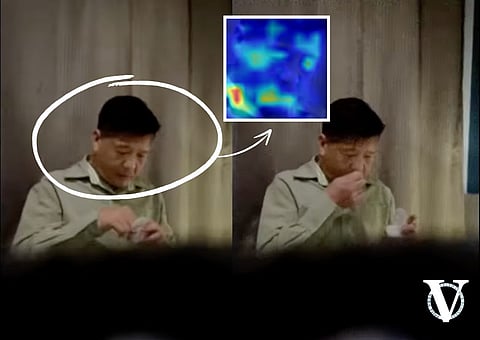
- NEWS
- the EDIT
- COMMENTARY
- BUSINESS
- LIFE
- SHOW
- ACTION
- GLOBAL GOALS
- SNAPS
- DYARYO TIRADA
- MORE

The Palace divulged yesterday findings by experts on digital media and artificial intelligence (AI) that further debunked the authenticity of a video that circulated last July showing a man purportedly the President “snorting” illegal drugs.
AI experts from the Deepfakes Analysis Unit (DAU), which is part of the India-based Misinformation Combat Alliance, said the video, which trended widely when it was released the day before President Ferdinand R. Marcos Jr. delivered his third State of the Nation Address, was extensively manipulated.
Using a tool called SensityAI, DAU found the so-called “polvoron video” to be suspicious and showed signs of a manipulation called “face swap,” the report said.
The DAU’s results were verified by Vera Files, an independent and award-winning social media unit and one of the country’s leading fact-checkers.
Presidential Communications Office (PCO) Acting Secretary Cesar Chavez said the findings vindicated President Marcos and spotlighted malicious individuals who have been trying to slander the President and cast aspersions on his character.
A report by Vera Files Fact Check, written by Celine Isabelle Samson and Bryan Daniele Manalang and published last 16 September, said copies of the video were submitted to the India-based misinformation advocate.
The report said the DAU found traces of extensive digital manipulation on what became known as the “polvoron video.”
Using another tool called HIVE, the international misinformation advocates “found multiple points of manipulation in the video’s run-time and where the no-deep fake and the deep fake manipulation overlapped,” the report added.
Last 23 July, the Philippine National Police (PNP) and the National Bureau of Investigation (NBI) both debunked the authenticity of the video. Both authorities said the facial image of the man in the video did not match the President’s facial features.
Results from their video spectral analysis revealed that the tragal notch and the antitragus (parts of the ear) of the man in the video and those of the President were different.
Chavez warned the public to be wary of malicious videos and social media posts being circulated by malicious individuals. “In today’s world of trolls, bots and deepfake manipulation, it has become easy to throw mud at others,” he said.
The rise of deepfakes is considered one of the biggest threats to the midterm elections next year, according to a Department of Information and Communications Technology official.
The Commission on Elections (Comelec) guidelines on digital campaigning and the use of artificial intelligence (AI) defined deepfakes as digitally manipulated images, videos, or audio files created using AI to fabricate realistic representations of people, events, or statements and falsely make it appear that an action, statement, or event transpired but in reality did not occur.
